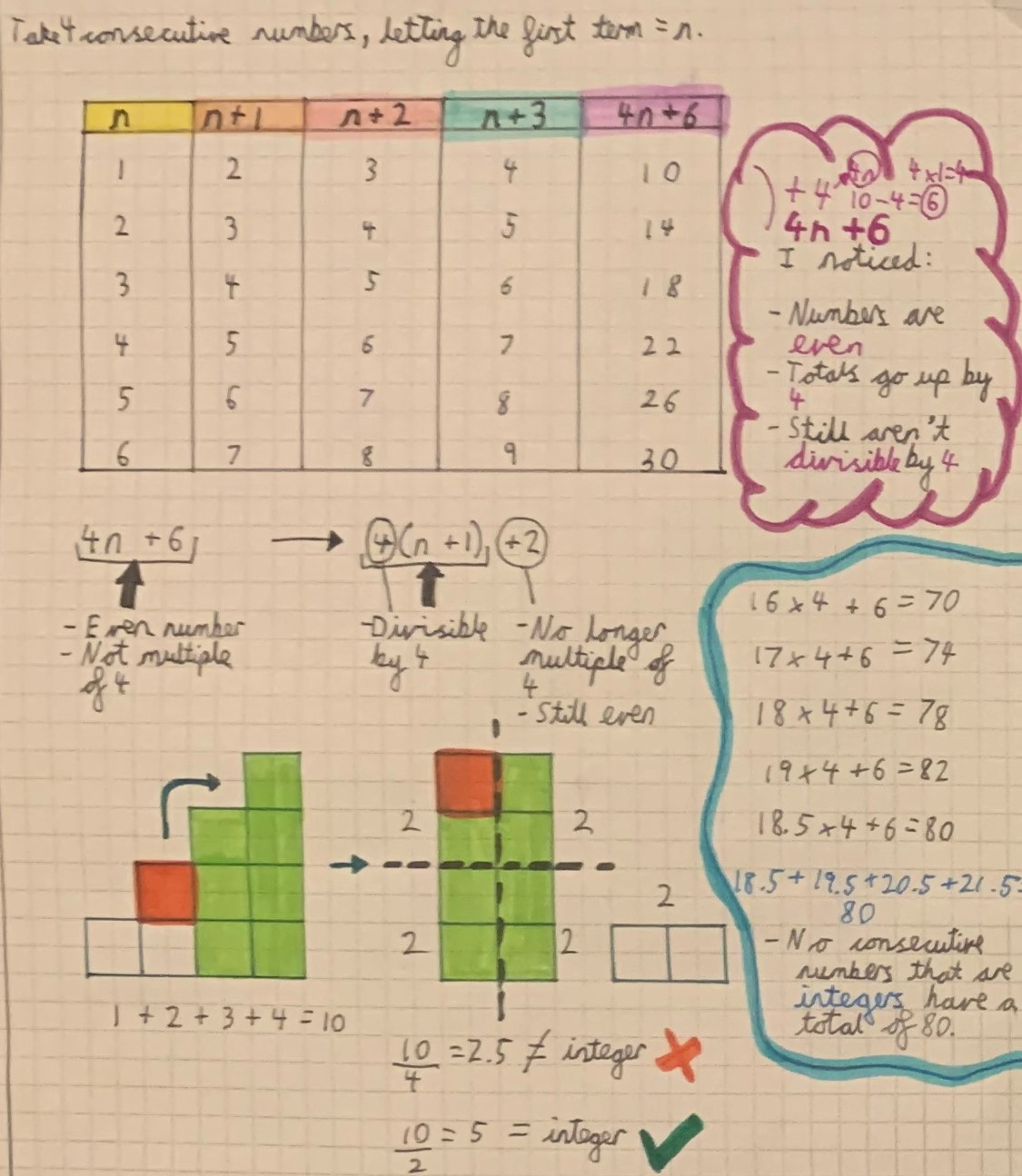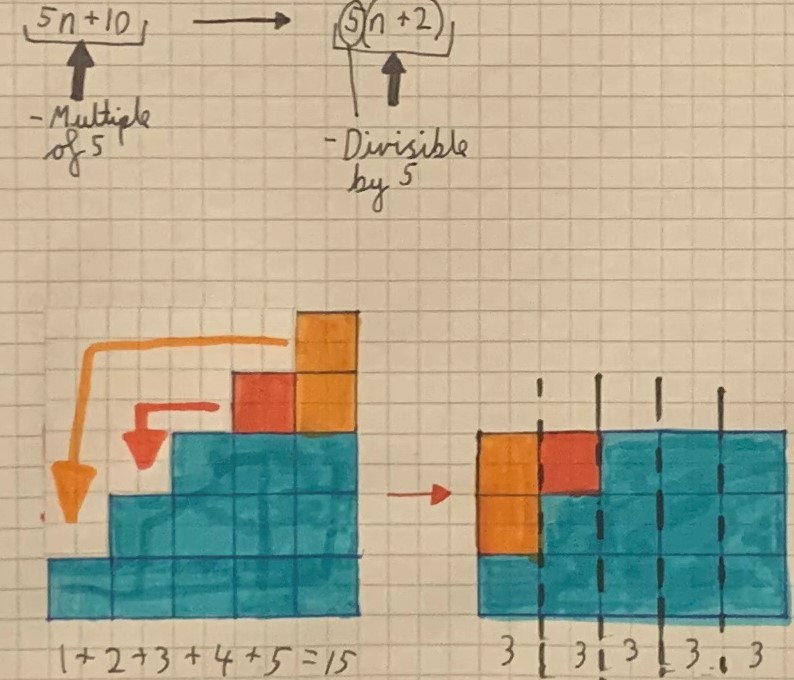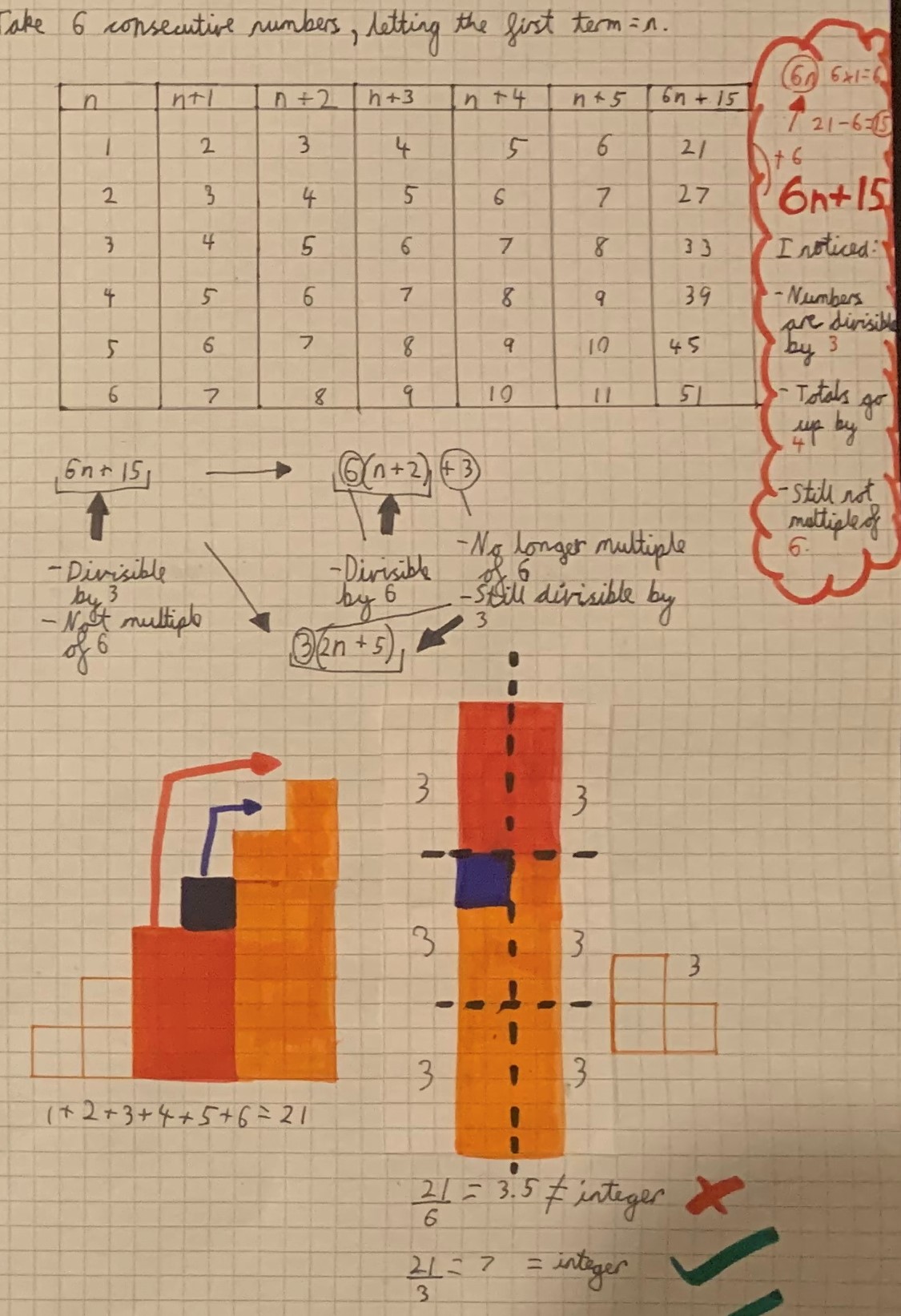Or search by topic
Number and algebra
Geometry and measure
Probability and statistics
Working mathematically
Advanced mathematics
For younger learners
What Does it All Add up To?



- Problem
- Student Solutions
- Teachers' Resources
Tobias from Wilson's School sent in this diagrammatic proof that the sum of four consecutive numbers can never be a multiple of 4:

Shayen from Wilson's School in England investigated the sums of 5 consecutive numbers. Here is Shayen's work (click to see a larger version):
Tobias sent in this diagrammatic proof that what Shayen noticed is always true:

Sunhari from British School Muscat and Mahdi from Mahatma Gandhi International School in India sent in this algebraic proof:
Let the five consecutive numbers be $n, n+1, n+2, n+3, n+4$
$\begin{split}n+n+1+n+2+n+3+n+4 & =5n+10\\
&=5(n+2)\\
&=5a for a = n+2\end{split}$
Shayen also investigated the sums of 6 consecutive numbers. Here is Shayen's work (click to see a larger version):
Here is Tobias's diagrammatic proof of what Shayen noticed:

Here is Mahdi and Sunhari's algebraic proof:
Let the six consecutive numbers be $n, n+1, n+2, n+3, n+4, n+5$
$\begin{split}n+n+1+n+2+n+3+n+4+n+5&= 6n + 15\\&= 3(2n+5)\end{split}$
It is an odd multiple of 3, and cannot be factorised to a multiple of six.
Shayen made a conjecture about adding other numbers of consecutive numbers (click to see a larger version):
Egeman from Wilson's School represented this algebraically:
Let $a$ be the first number in a sequence of consecutive numbers
Let $n$ be the number of numbers in a sequence of consecutive numbers
Let $s$ be the sum of the numbers in a sequence of consecutive numbers
where $n=1, s=1a+0$;
where $n=2, s=2a+1$;
where $n=3, s=3a+3$;
where $n=4, s=4a+6$;
where $n=5, s=5a+10$;
where $n=6, s=6a+15$; etc
$s$ consists of two parts: a multiple of $a$ and a triangle number.
The multiple of $a$ is always $na$.
The triangle number is the $(n-1)^\text{th}$ term in the sequence of triangle numbers.
Mahdi and Sunhari showed why $s$ takes this form. This is Mahdi's work:
From here, Mahdi, Sunhari and Egeman all used a formula for the $(n-1)^\text{th}$ triangular number to show that if $n$ is odd, $s$ is a multiple of $n$, and if $n$ is even, then $s$ is not a multiple of $n$ but is a multiple of $\frac n2.$ Here is Mahdi's work:
You may also like
Adding All Nine
Make a set of numbers that use all the digits from 1 to 9, once and once only. Add them up. The result is divisible by 9. Add each of the digits in the new number. What is their sum? Now try some other possibilities for yourself!
Old Nuts
In turn 4 people throw away three nuts from a pile and hide a quarter of the remainder finally leaving a multiple of 4 nuts. How many nuts were at the start?




